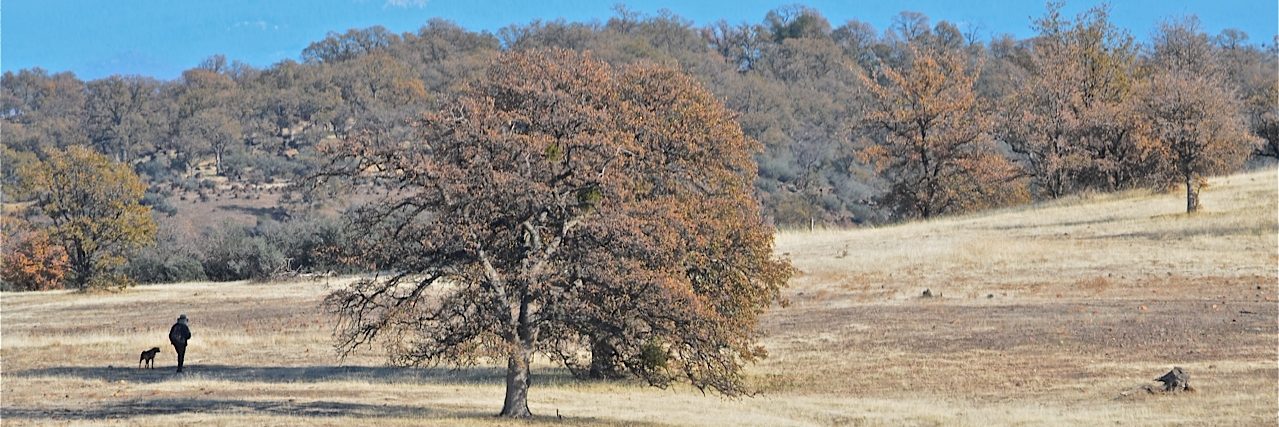The West, including our area, is in severe drought. I’m a little terrified at how many of the lower branches in the blue oaks that surround our homestead are now dead, crackly branches, hanging down towards the dry grasses. I look around and see a vast surface area of low-hanging flammable material that would wick a grass fire up into the trees. Two years ago I bought a pole saw to start pruning these branches off. But once I had these branches on the ground, what do I do with them? A common practice is to burn them during the moist winter when fire danger does not exist. But that would put CO2 into the atmosphere and contribute to global warming. Wouldn’t it be better to have the wood decay into the ground and sequester carbon there instead? So I piled the branches into mounds to act as cover for birds and other animals.
However, I know from previous experience that it will take 15-20 years for these brush piles to decompose into the ground. Our challenge in California’s Central Valley is that the summers are hot and dry; the winters are moist but cold. The organisms that decompose wood are most effective in warm, moist environments but warm/moist occurs for only a few months (late February into late April). Too cold before, too dry after that. This period is even shorter for woody material that is up in the air. It air-dries quickly so the decomposing organisms have limited time. Since time is limited, the main way I can increase the rate of decomposition is to increase the surface area in contact with that warm, moist ground.
This has led me to a new activity. I walk around the perimeter of our homestead, breaking off the low-lying twigs and branches that easily snap. I let them lie where they fall. But as all these branches accumulate on the ground, I consciously try to step on them in a way that crunches and crumbles the branches and twigs into smaller pieces so that more and more of the dead surface areas scrunch into direct contact with the ground. My hope is that this will dramatically speed up decomposition, come the next winter. It should also dramatically decrease the rate at which a fire would burn through the area because an abundant 3D surface area of dead wood rising seven feet within the oxygenated atmosphere is being transformed into a vast but flat scrunch of surface areas pressed into many square feet of moisture-holding ground. So my hope is that I am both reducing fire danger and increasing carbon sequestration with the same, surface-area-moving activity. In the meantime, it is a fun game to look at the fallen branches around me and judge what step would lead to the maximum crunch underfoot. Each step exercises my sense of balance and flexibility.

Leave a Reply